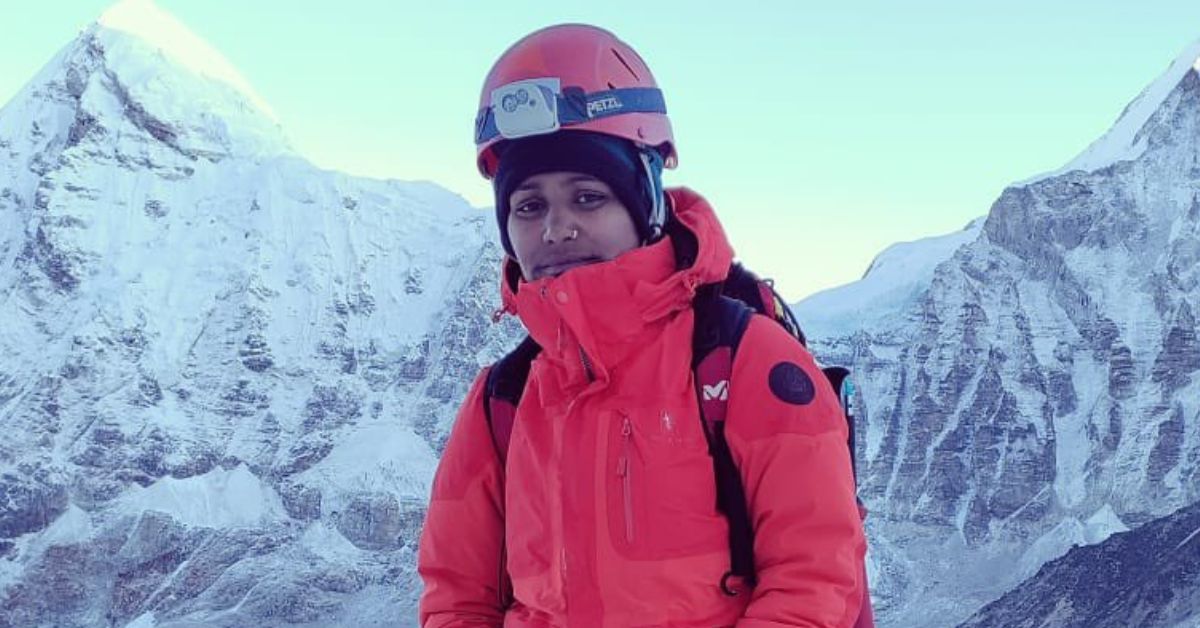Feature image: Twitter
For the remote and otherwise unknown village of Lothru, Uttarkashi, June brought in a momentous occasion the region had not seen surpassing — a young woman by the name of Savita Kanswal, who grew up in an impoverished farming family in the village, had just wrenched a record.
The 26-year-old became the first Indian woman to scale Mount Everest and Mount Makalu in 16 days, creating a national record for 10 expeditions in total this year.
After the win, Savita recalled that the tears fell without prompting when she reached the summit — it was a dream she had seen when she first began exploring mountaineering as a career.
On 4 October, she was among the 10 people killed in an waterfall in her home district in Uttarakhand. She was part of the 41-member team unprotected in the disaster, of which 22 remain missing.
After her win this year, Savita was widely recognised as a promising mountaineer, who people lauded for “rising whilom her circumstances” to foray into a male-dominated sport. Though her career had just kicked off, it was once studded with several achievements in a short period, for which the young woman painstakingly worked for years.
Her dreams, she once said, were unchangingly motivated by the need to move vastitude predetermined power struggles and patriarchy in her region.
I finger proud to reach my land of Kashi. I thank all the people of my Kashi very much. That with your love and blessings,
— Savita Kanswal(Everester) (@savi_kanswal) June 29, 2022
I have brought the name of this holy earth to the highest peak of the world, Mount Everest. #Uttrakhand#uttarkashi #themountaingirl pic.twitter.com/oZoKTB8Ny8
As a child, Savita would climb up to 4 kilometres every day to reach her school, slantingly juggling chores and daily responsibilities to superintendency for her six-member household. She took up an venture undertow at the school, which became her first skim with mountain climbing.
“People pitied my family for having four daughters and no sons. It fuelled my determination to prove them wrong.”
– Savita to The Times of India
“I lived in a conservative, male-dominated society but I unchangingly wanted to unzip something big in life.” She got this endangerment in 2011 through a undertow held by the Uttarakhand Tourism Development Council. “This is when I decided I wanted to wilt a mountaineer.”
Her parents recalled to The Quint, “People in the town would come and ask us why we’re sending our young daughter outside. We did not know what to say to them.” But her mother Kamleshwari noted that since her success in the field, her family and town members unwrinkled sooner had a transpiration of heart.
Savita was chosen to learn at the Nehru Institute of Mountaineering (NIM), but without her training was over, her family was unable to support her mountaineer career. So she travelled to Dehradun and picked up odd jobs at cafes and footwear stores surpassing saving unbearable money to return to the institute as a guest instructor.
She got her unravel in 2018 with her maiden trek to Draupadi ka Danda. This is moreover where she and her team were when the waterfall struck on Tuesday.

In 2021, Savita scaled Mount Lhotse, the world’s fourth-highest peak.
Financing the journey could have been as strenuous as the trek itself, but the Government of India well-set to sponsor her Rs 21-lakh climb, and she knew it was an opportunity she could not miss. Her most recent expedition, which earned her the national record, was moreover financed through crowdfunding and hundreds of donations.
Savita’s efforts had brought new-found hope to dream vastitude their predetermined circumstances for her family and village. Her mother said to Quint, “Earlier, everyone used to tell us that she should get married instead of pursuing a career in mountaineering. Now, they come and tell us ‘Look at what your Savita has achieved’.”
The mountaineer was not oblivious to the perils of her career. As a young girl traversing uncharted territories, she had her share of scares — coming wideness sufferer persons on a climb, facing intrusive questioning of people from her village, and the mental toll of spending weeks and months yonder from family.
But she maintained that once she knew mountaineering as a career was possible, it was “all [she] wanted to do”.
Savita’s journey though cut short, had all the makings of a true underdog story. Her death was mourned by the internet, her institute, and her village alike, who all took to unclose her enthusiastic determination to scale unconfined heights, literal or metaphorical.
Edited by Yoshita Rao
